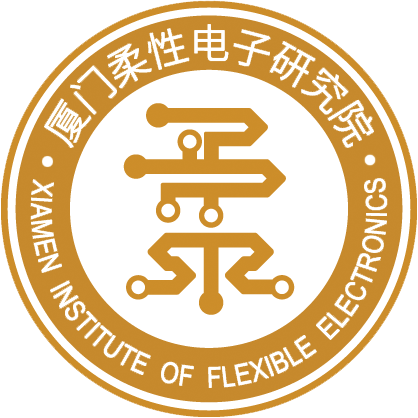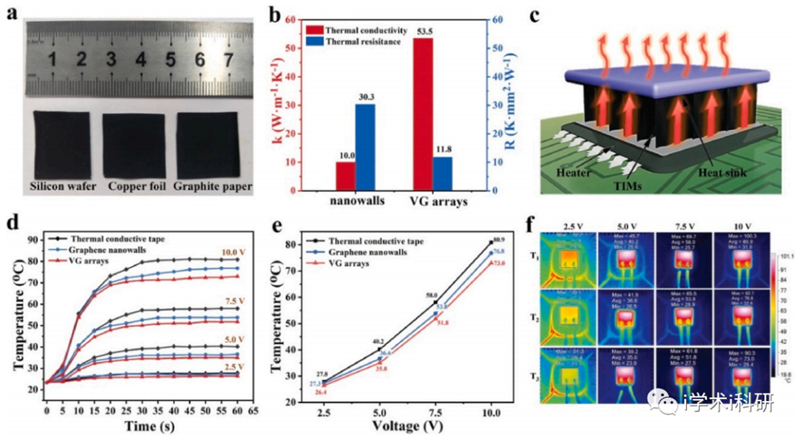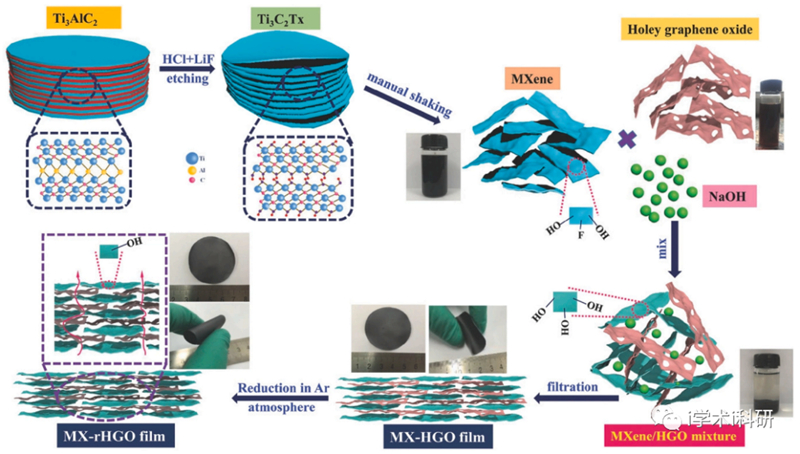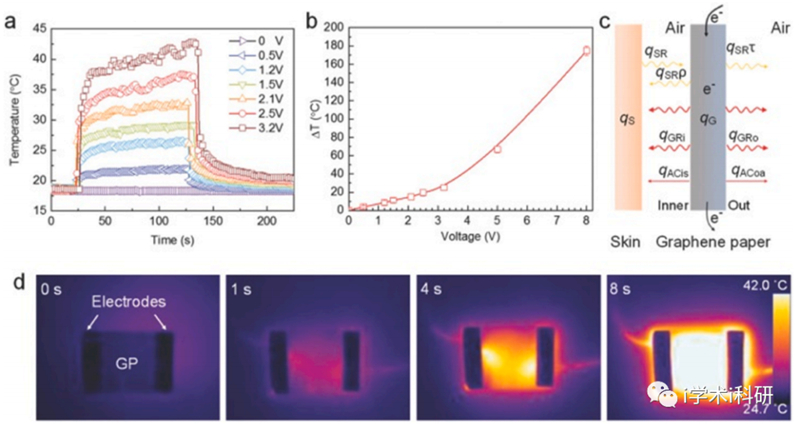

研究背景
为了满足便携性、用户友好性和传感器集成等要求,石墨烯基纸/膜/膜作为有前途的候选材料被不断引入柔性传感设备、先进的可穿戴/可拉伸电子器件和高性能护理点(POC) 分析设备的构建中。石墨烯纸(GPs) 强大的机械强度(平均到32 GPa)和拉伸应力(高到350 kJ m-3)为构建柔性电子装置奠定了基础。特别是,与传统的刚性基材(如玻璃、塑料和硅)相比,石墨烯表现出突出的机械灵活性,这赋予了它们开发类似皮肤的可穿戴设备的巨大潜力。GPs可以通过多种方法获得,如真空过滤、Langmuir- Blodgett沉积技术、界面捕集技术、溶液浇注、旋喷/浸涂、电泳沉积和化学气相沉积(CVD)。近年来,GPs的制备方法没有明显变化。然而,值得注意的是,新的功能策略可以有效改善GPs的性能。一方面,通过调整皱纹变形、阵列排列和层间间距,石墨烯及其衍生物(如氧化石墨烯和还原氧化石墨烯)可被用于逐层纸质复合材料的智能结构,具有强大的机械强度、大的电活性表面积、改进的电流密度、可折叠的特性等。另一方面,各种纳米物体可以通过分子间的作用力(如静电、氢键和π-π堆积作用)与GPs进行装饰,以扩大GPs在传感领域的应用。此外,由于其出色的生物相容性,除了用于装载或生长纳米物体,GPs还可以提供大的表面积来限制生物分子,这为POC测试构建了可行的平台。GPs很容易获得并可再生,可以成为在各种条件下开发低成本和一次性分析装置的理想基质。在此,本综述的总体目标是通过关注目的驱动的特定双模式功能策略(结构功能化和外来材料功能化),为基于GPs的传感器领域提供关键的工程洞察力。详细讨论了皱纹、阵列排列、层间间距和装饰材料的关键所需参数。此外,为了解释功能化的意义,总结了目前基于GPs的传感器在人类健康、食品安全和环境监测方面的应用研究进展。
成果简介
石墨烯纸(GPs) 凭借其独特的性能,如可扩展的生产能力、可调整的微观结构和非凡的机械灵活性,使传感器领域朝着低成本、用户友好和可穿戴/便携式的方向发展。它们可以通过调节其结构来提高各种特性,如电 子特性、导热性和机械强度,从而被用作多功能的构建块。此外,由于良好的兼容性,作为支撑材料的GPs能够通过各种相互作用力与其他材料结合,实现特定的功能化。许多智能设备,如柔性传感器、先进的可穿戴/可拉伸电子器件和高性能的医疗点分析设备正在不断地快速发展。在此,本综述旨在提供一个从宏观GPs的智能结构到传感器应用的关键工程洞察力,重点是目的驱动的特定双模式功能化(结构功能化和外来材料功能化)。新疆大学Minwei Zhang等人总结了对石墨烯及其衍生物的纸/膜/膜进行功能化的多种可能性,对GPs在人类健康管理、食品污染物检测和环境监测方面的传感应用进行了评估。该综述以“Functional graphene paper from smart building to sensor application”为题发表在Biosensors and Bioelectronics期刊上。
综述要点
1. 提出了目的驱动的双模式功能策略,以增强石墨烯纸(GPs)的特性。
2. 回顾了基于GPs的生物传感在各个领域应用的最新进展和成果。3. 为进一步发展先进的生物传感器,介绍了该领域当前的挑战和前景。
图文导读

Fig. 1. An overview of the functionalization of graphene papers and their applications.
Fig. 2. Controlling surface morphology of the G2 (Generation after undergoing 2 deformation.) hierarchy through different combinations of shrinking orientation. The G2 structures in this figure are shrunk from 20-nm G0 coatings. SEM images of hierarchical G2 structures formed with a) 2D-2D, b) 2D- 1D, c) 1D-2D, d) 1D⊥1D, and e) 1D||1D shrinking orientations are shown. Yellow arrows indicate the wrinkled feature from the G1 uniaxial shrinkage.

Fig. 3. Thermal property and practical application of TIMs.

Fig. 4. Schematic illustration of the synthesis process of rGO/N:rGO and rGO*/N:rGO* films (the asterisk indicated pre-reduced rGO samples).

Fig. 5. Illustration of synthesis of the modified MXene/holey graphene film.
Fig. 6. (a) Application for wrist pulse detection. (b) Pulse waveform of the tester. (c) Application for respiration detection. (d) Response curves for breathing before and after exercise. (e–h) Response curves for the tester’s movements of jumping, push-ups, squatting, walking, and running in a motion monitoring test.

Fig. 8. Heating property of the GPs.

Fig. 9. (a) Schematic illustration of the fabrication process of the AuNPs-LIG interdigitated array electrode using one-step laser induction; (b) Schematic illustration of the AuNPs-LIG interdigitated array electrode-based immunosensor for the detection of E. coli O157:H7; (c) Optical image of the prepared the AuNPs-LIG interdigitated array electrode; (d) Nyquist plots obtained with AuNPs-LIG electrode (black line), antibody modification (red line), BSA blocking (blue line), and bacteria capture (purple line); (e) The fitting curve of the impedance spectra using Randles equivalent circuit. The concentration of E. coli O157:H7 is 1 × 106 CFU mL−1 and the test solution is 0.1 M KCl solution containing 5 mM [Fe(CN)6] 3-/4-.

Fig. 10. Schematic illustration of the principle of flexible freestanding GNP-based potentiometric enzymatic aptasensor for nuclease-based amplification detection of kanamycin.
总结展望
总而言之,GPs 在传感领域显示了很好的潜力,其多功能性也通过其在各个领域的利用能力得到了验证。本综述总结了GPs在传感领域的应用。根据目前的研究进展,预计GPs将随着新型特定GPs的开发而进入新时代。基于特定的功能化,GPs 的许多特性( 如可弯曲性、机械强度、压电特性、生物相容性、导热性和导电性等)可以得到显著改善,以满足各种需求。与传统的电子产品相比,基于GPs的可穿戴或便携式设备可能在未来获得更多的青睐,因为它们具有明显的优势,如灵活性、易于制造、可处置性和使用友好性。尽管有上述优点,但目前GPs仍然存在不可避免的缺点。为了实现GPs向现实生活中的产品转化,优良的耐受性和较长的使用寿命是必不可少的。然而,GPs的性能高度依赖于环境(如湿度和温度),目前GPs的使用寿命还不能与传统的基材相比。因此,未来的研究工作可能能够集中在选择各种材料来源和制备技术来制造GPs。同时,不断探索这些参数,如Winkles、阵列排列、层间间距、孔隙大小和新型纳米材料对GPs性能的影响。随着技术的发展,相信在不久的将来,基于GPs的材料可以被应用到传感的各个阶段。
文献链接
Functional graphene paper from smart building to sensor application, DOI:10.1016/j.bios.2022.114031
https://doi.org/10.1016/j.bios.2022.114031
厦门柔性电子研究院
福建省协同创新院柔性电子产业技术分院
地址:厦门市集美区集美大道1995号科技成果转化加速器1期4F
邮编:361024 电话:0592-5366222 邮箱:admin@flex-elec.com
部分图片来源于网络,如有侵权请联系删除